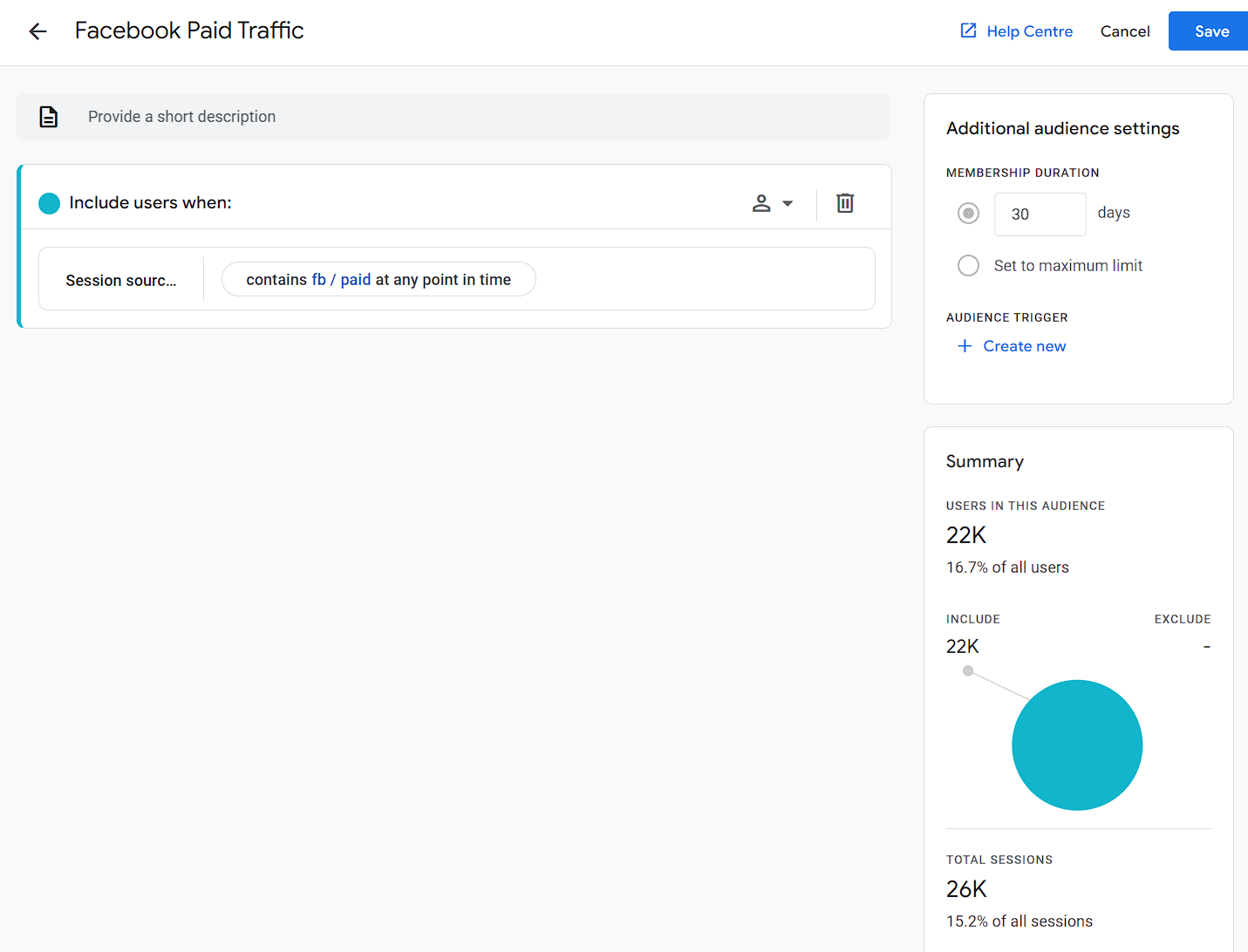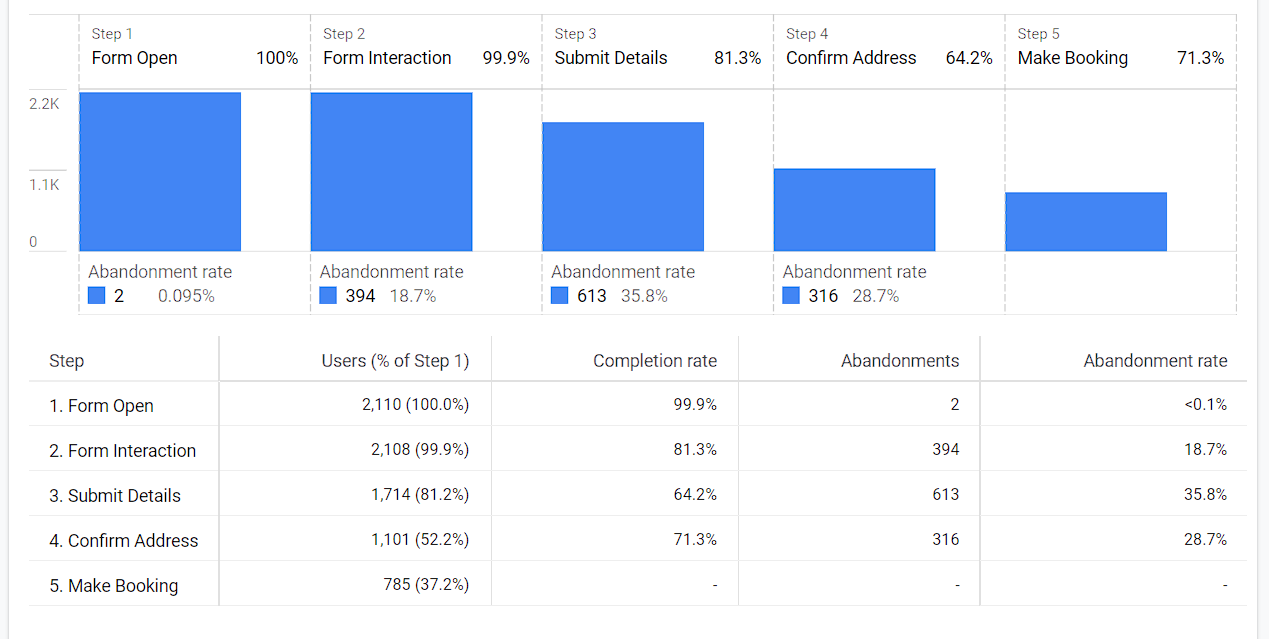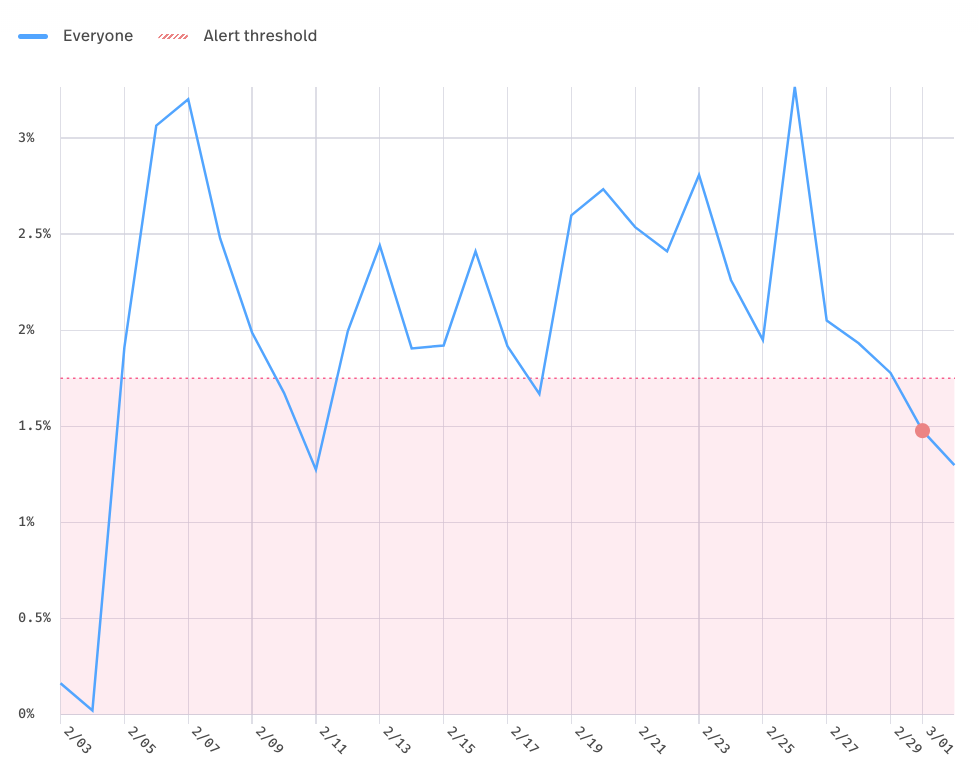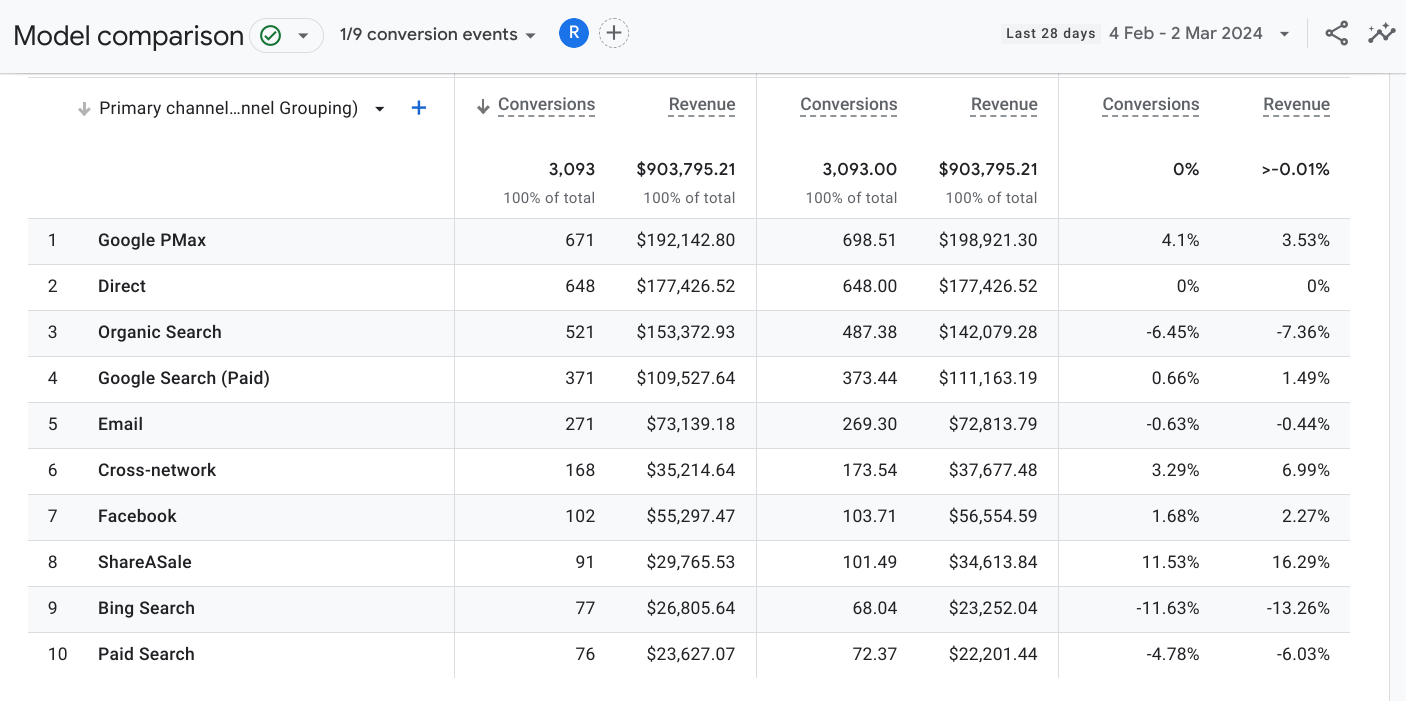GA4 For Ecommerce Brands: Learnings & Evaluation
Join Tom Cox, Data & Analytics Manager at Swanky, as he shares how our team has been leveraging GA4’s capabilities to ensure data is always at the forefront of decision making.
Written By
Tom Cox

As a data-led ecommerce agency, we place a high value on ensuring our clients’ data is comprehensive, accurate and up-to-date. When Google announced in 2022 that Universal Analytics (UA) would be replaced by Google Analytics 4 (GA4), we dedicated time to understanding the changes and ensuring that our team was well-positioned to support our clients.
Now, several months on from when UA was sunsetted for non-360 accounts, we can reflect on how Swanky and our clients have found the transition to GA4, evaluate its strengths, and consider how we’re navigating the solution’s sticking points.
Migrating ecommerce stores from UA to GA4
Swanky had a successful period migrating our clients from UA over to GA4. Several stores were set up in 2022, well ahead of the deadline, giving these brands over a year’s worth of data to draw from. We also conducted data migration projects for new clients closer to the deadline.
Our migration projects were successful because we have a dedicated analytics team that not only understands GA4 and tracking technology, but also has extensive experience in implementing and troubleshooting tracking solutions.
This expertise, coupled with that of our in-house developer team, allowed us to smoothly set up all aspects of GA4 tracking. Despite Shopify having launched its own GA4 connector, our tracking solutions remain live for clients because the quality and detail our data service provides is a marked improvement on Shopify’s solution.
GA4 several months on: What’s going well
As with any new platform, there has been an inevitable learning curve during the migration and implementation process of GA4. That being said, our team has pooled their learnings and quickly understood how to use and interpret the data found in GA4 to best serve our clients.
Improved understanding of attribution
Swanky has been leveraging GA4’s built-in attribution modelling to better understand how different channels are contributing to revenue and conversions. We have developed a comprehensive suite of reports that show how each channel is contributing to overall revenue (which can be drilled down to a transaction level).
You can learn more about this reporting by watching our LinkedIn discussion with LittleData.
Tracking additional data via integrations
Many of our clients are using different testing platforms or other third-party tools to track additional data in GA4. This has included the successful implementation of Webtrends Optimize, VWO, Dynamic Yield and Calendly data into GA4. We have been able to easily integrate test and audience data into GA4, making it easier than ever to analyse the results of A/B testings.
Utilising Google’s Looker Studio
Using Google’s Looker Studio has improved the quality of reporting that we have access to. This has helped us transition between UA and GA4 by offering familiar metrics using blended calculations (conversion rate, bounce rate, etc.).
Enhanced engagement metrics
We have found GA4’s enhanced engagement metrics very useful in identifying which pages are performing well. These include:
a) Engagement Rate – We have experimented with a longer engagement time of 20 seconds to measure which pages keep users on site for a meaningful amount of time. This setting can be easily amended in the GA4 admin section.
b) Engagement Time – GA4 now tracks when users have the browser tab in focus, which means that it accurately reports how much time a user is spending interacting with your site.
More user-friendly
The improved event structure and layout of GA4 have been simpler and more intuitive to use, especially for new users who are not familiar with UA. The overall UI of GA4 isn’t bloated with irrelevant reports, however the onus is on users to create and customise the reports they need.
Producing highly customised reports
GA4’s native integration with BigQuery has enabled us to hone in on certain metrics and produce highly bespoke reports for all clients. This integration was previously only available to Google 360 accounts.
We have also used BigQuery to troubleshoot any tracking or attribution issues, by drilling down into granular event data.
Detailed segmentation
GA4 audiences allow for improved segmentation which makes it easier to understand how different customer cohorts are behaving on site. In addition, Google added predictive audiences that can identify users who are likely to purchase based on the behaviour of other customers.
These audiences can all be seamlessly integrated into Google Ads.

Screenshot of Facebook Paid Traffic view in GA4.
Increased visibility on shopping flows
Through the use of Explore reports, we are building funnels that improve the visibility of shopping flows. This has been especially useful in understanding how subscription and quiz flows are functioning.

Example of an Explore report.
How Swanky is navigating GA4’s friction points
Since GA4’s universal adoption in 2023, there has been widespread commentary on its strengths and weaknesses; the areas of data that have improved visibility and those that are now harder to determine than they were in UA. This has understandably led to friction points that have required careful consideration in order to successfully navigate.
Delayed data visibility
There is now a 72-hour wait for reports to be updated in GA4. This has proven frustrating at times, as same-day data was previously visible in UA. Clients often expect feature parity with UA, but this simply isn’t possible in GA4. This delay has meant there aren’t features such as automated alerts, thus reducing our ability to closely monitor metrics such as revenue, sessions and conversion rate. To combat this, we are utilising other tools to monitor day-to-day performance.
One tool that we have been using regularly is the DXI solution Fullstory. This has allowed us to set up metrics that are calculated based on live sessions captured in real time. We have also used these metrics to create automated alerts that notify us via Slack and email when a metric drops below a certain threshold – as seen in the image below.

Screenshot of Fullstory’s threshold functionality in use.
You can read more about how Fullstory helps our clients make smarter decisions in this article about how we use the tool as an official Fullstory agency partner.
Ecommerce attribution in GA4
There continues to be some confusion in the ecosystem around attribution modelling and traffic acquisition dimensions. At Swanky we have offered training to both our clients and wider team to ensure clarity. As a reminder:
- User dimensions (first user source/medium, first user default channel grouping) should be used to understand how a user first came to a site. When viewing conversions, this is equivalent to a first-click attribution model.
- Session dimensions (session source/medium, session default channel grouping) are best for understanding all sessions – a single user can visit the website multiple times and each time have a different session source. Session dimensions are best used to examine how users’ interaction with the site changes based on where they came from. When analysing conversions using these dimensions, you would be seeing a last-click attribution model.
- Attributed dimensions are used to understand which traffic sources are best at converting and contributing revenue. These are listed as source/medium, default channel grouping and campaign. These dimensions will leverage the attribution model on the GA4 (usually data-driven).
What does the future hold for GA4 in ecommerce?
As a new data tool from Google, we have already heard announcements of updates coming to GA4. These evidence the fact that Google is listening to customer feedback and is committed to creating a market-leading data tool. We’ve also seen the recent inclusion of a Google Sheets Add-on, expanding the application and usability of GA4.
Other changes that have occurred since launch include:
- Google Signals being deprecated; and
- Google Consent Mode being updated.
Additionally, the removal of third party cookies from Chrome is finally happening in 2024; a change that will have widespread repercussions for data usage throughout ecommerce.
With each of these additions and deprecations comes another moment for us to learn and adapt. This ecosystem is known for constantly evolving and data is a driving force for this. As such, we continue to commit time and resources to upskilling our team’s data literacy.
GA4 in action: How we’ve used this with ecommerce clients
We have utilised Littledata’s GA4 tracking solution to pass server-side data to GA4, giving us full visibility of all revenue through a Shopify store. As a result, this has allowed us to report accurately on marketing performance – something that is often tricky to navigate when running multi-channel, full-funnel marketing campaigns.

Littledata’s GA4 tracking solution in practice.
In addition, data is passed through to Google Ads via conversion events and audiences. Conversion events serve two purposes in Google Ads. Firstly, they allow us to report which ads are converting and how much revenue each campaign is generating. Secondly, they provide the required tracking signals to identify what a converting user looks like, which Google Ads can then use to better target converting customers.
GA4 for your ecommerce brand
Overall, we have thoughtfully navigated the challenge of balancing clients’ requirements with GA4’s capabilities and limitations. This has largely been thanks to our team’s ability to create and adopt new reporting practices when tools change.
Swanky’s data and analytics services continue enabling clients to make smarter data-driven decisions for their brands. Get in touch with our solutions team to discuss how our data team can support your business’ growth.

